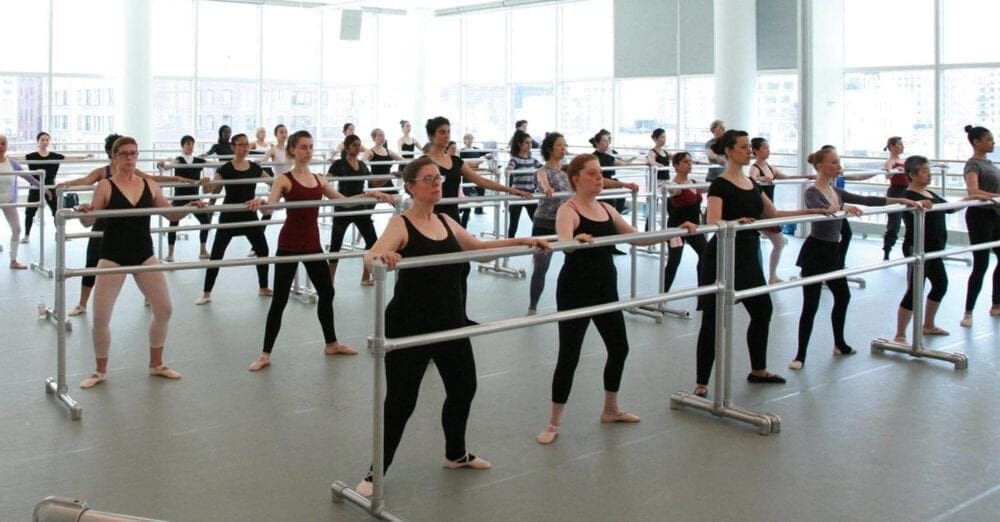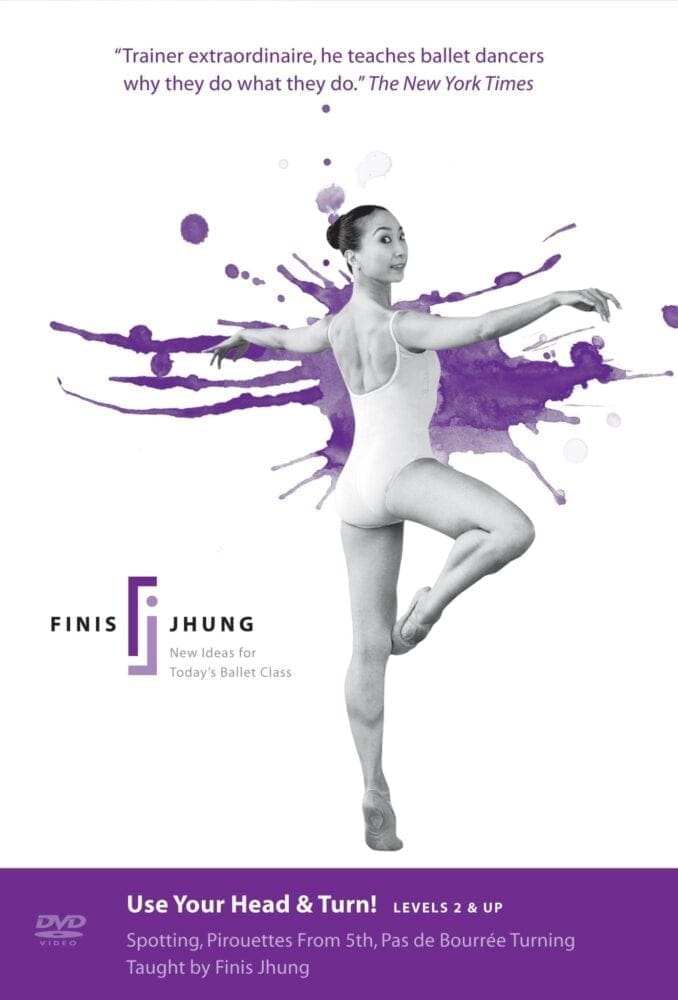You’re always stretched up and standing tall in Number 1, but when you plié-relevé there is a distinct difference in how you move and look according to the way you do it. Here’s how to get the feeling of making your plié relevé correctly. Stand in front of a wall, arms-length away, place both hands on the wall, and lean in so both elbows are bent. Slowly push yourself away from the wall. Your elbows straighten because you push the wall. Continue pushing until your hand leaves the wall and you are pushing the wall with just your fingertips. In the same way, your legs straighten when you relevé because you are pushing down on the floor. Driving down in order to go up—pushing down to relevé—instead of trying to pull yourself up—sends your weight down into the floor and gives you better balance and fluidity of movement. Try it.



